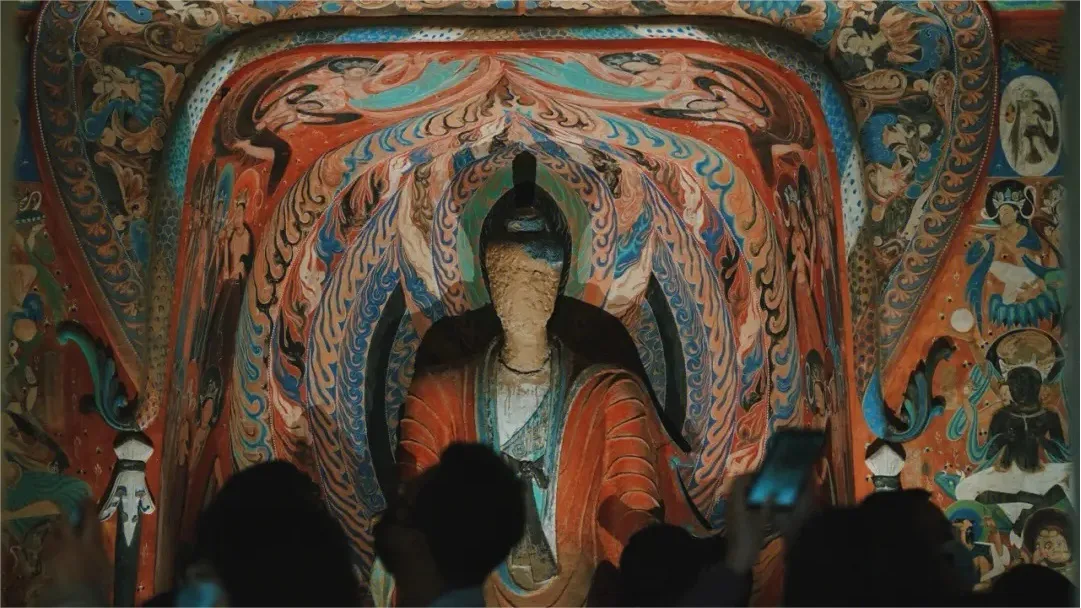The Dunhuang Museum (敦煌博物馆), established in October 1979, originally began as an archaeological team within the county cultural center. Covering an area of approximately 2,400 square meters, the museum primarily showcases historical artifacts from the Silk Road metropolis of Dunhuang and precious relics from the Mogao Caves. The museum boasts a collection of 13,355 items, including 138 first-grade cultural relics, 387 second-grade cultural relics, and 1,387 third-grade cultural relics.
The museum’s exterior is uniquely designed by academician Cui Kai from the China Architectural Design Institute. The building’s appearance and color scheme integrate cultural symbols of the Great Wall, beacon towers, and ancient fortress-style architecture, resembling the walls and beacon towers of the Han Dynasty Great Wall. Inside, the museum is reminiscent of a grotto complex, with walls and corridors fashioned like ancient stone grotto corridors, creating a distinctive atmosphere. The museum houses six exhibition halls, with its main exhibition being the thematic display “The City Where China and the West Meet.” A tour of the museum typically takes about 1-2 hours.
Table of Contents
- Basic Information
- Location and Transportation
- Highlights of Dunhuang Museum
- Other Attractions in Dunhuang Urban Area
Basic Information
| Estimated Length of Tour | 1 – 2 hours |
| Ticket Price | Free |
| Opening Hours | 9.00 – 18.30; Last admission: 17.30 (1st May – 30th September) 9.00 – 18.00; Last admission: 17.00 (1st October – 30th April) Closed on Mondays |
| Telephone Number | 0086-0937-8818191 0086-0937-8818173 |
Location and Transportation
The Dunhuang Museum is located at 1390 Mingshan North Road, Dunhuang City, Jiuquan, Gansu Province. To get there, you can take bus Dunhuang 3 and get off at the Museum Stop (博物馆站).
Highlights of Dunhuang Museum
The City Where China and the West Meet

“The City Where China and the West Meet” exhibition spans the entire museum, organized chronologically into different units. Visitors can explore each unit layer by layer, encompassing 13 units in total. These units cover the ancient history and residents of Dunhuang, the significant development during the Han Dynasty, continued development through the Wei, Jin, Southern, and Northern Dynasties, prosperity during the Sui, Tang, and Five Dynasties, the rule of Dunhuang by Shazhou Uighurs and the Western Xia, the Yuan and Ming periods in Dunhuang, development during the Qing Dynasty, the discovery of the Library Cave, the Qing Dynasty grain tax resistance movement, and ancient Silk Road coins. The units are arranged chronologically, guiding visitors through the stone grotto-like corridors to experience the thousand-year history of Dunhuang.
Cave 45 and Silk Road

The exhibits in the museum are primarily divided into two categories. The first category focuses on the grotto art of the Mogao Caves, including replicas of undeveloped caves such as Cave 45, which is famous for its depictions of music. This category also includes some of Dunhuang’s manuscripts, known as the “Dunhuang Manuscripts,” which are extremely valuable. The second category centers on the culture of the Silk Road, featuring elegant and beautiful artifacts like the Northern Liang stone pagoda and portrait bricks. Among these, the qilin brick is particularly rare and can be considered the museum’s treasure. Visitors should not miss this exhibit.





